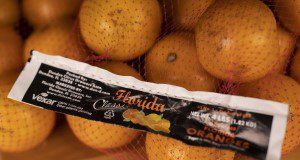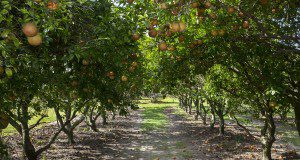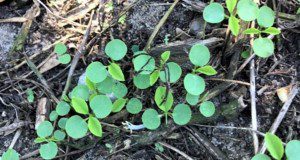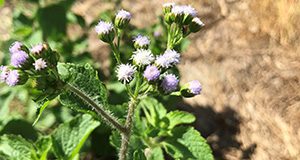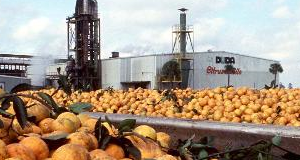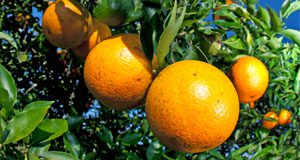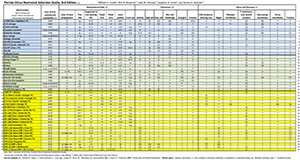This quick reference table will provide growers with information (suggested rates, use restrictions, etc.) on different herbicides used in citrus. The herbicide table, prepared based on the Florida Citrus Production Guide, will aid growers to select an appropriate postemergent herbicide program in citrus groves. Written by Ramdas Kanissery, Camille E. McAvoy, Jamie D. Burrow, Stephen H. Futch, Brent A. Sellers, and S. Shea Teems, and published by the UF/IFAS Horticultural Sciences Department.
https://edis.ifas.ufl.edu/hs1410
Tag: Stephen H. Futch
Florida Citrus Rootstock Selection Guide, 4th Edition
This updated 4th edition of the Florida Citrus Rootstock Selection Guide (FLCRSG) is a revision of the 2016 publication. The guide is a convenient, easy-to-use reference to 21 characteristics of 49 rootstocks. Of those, 12 are time-honored commercial rootstocks (highlighted in blue), which are the most reliably characterized. The next 13 rootstocks are minor commercial ones (highlighted in green) that are less frequently used today in Florida but may have been prominent at one time. The third group consists of the most recently released 24 rootstocks (highlighted in yellow) for which there is limited commercial experience. The new addition includes three new USDA rootstocks and updates information on a few traits. Written by William S. Castle, Kim D. Bowman, Jude W. Grosser, Rhuanito Soranz Ferrarezi, Stephen H. Futch, and Steve Rogers, and published by the UF/IFAS Horticultural Sciences Department.
https://edis.ifas.ufl.edu/hs1260
Identification and Management of Clustered Pellitory (Parietaria praetermissa) in Citrus Groves
In Florida, clustered pellitory is becoming a troublesome weed for citrus, especially from the winter through early summer. Inadequate management of this weed can result in its heavy infestation in tree rows and can interrupt the spray pattern of low-volume drip irrigation systems. This new 3-page publication of the UF/IFAS Horticultural Sciences Department will assist Florida citrus growers with proper identification of clustered pellitory and with adoption of adequate and timely strategies to manage this weed in their groves. Written by Ramdas Kanissery, Biwek Gairhe, Brent Sellers, and Steve Futch.
https://edis.ifas.ufl.edu/hs1341
Biology and Management of Tropical Whiteweed (Ageratum conyzoides) in Citrus Groves
This 3-page document profiles tropical whiteweed, a common weed of agriculture crops, wetlands, roadsides, and pastures in many parts of the world, and discusses how to manage this weed in citrus groves. Written by Ramdas Kanissery, Brent Sellers, and Steve Futch and published by the UF/IFAS Horticultural Sciences Department, January 2019.
http://edis.ifas.ufl.edu/hs1325
The Economics of Planting New Citrus Groves in Florida in the Era of HLB
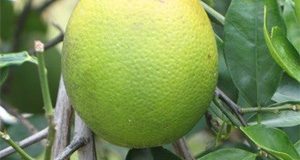
Citrus greening, or huanglongbing (HLB), is a bacterial disease that affects citrus trees’ vascular systems, limiting nutrient uptake. As trees become increasingly affected by the disease, they suffer premature fruit drop, the fruit harvested is smaller and misshapen, and the juice quality is compromised, all resulting in lower yield. To this date there is no cure or successful management strategy to deal with HLB. This 8-page fact sheet written by Ariel Singerman, Marina Burani-Arouca, and Stephen H. Futch and published by the UF/IFAS Food and Resource Economics Department summarizes the results of an analysis of three tree densities under different production and market conditions to determine which density is most profitable.
http://edis.ifas.ufl.edu/fe1050
Citrus Nutrition Management Practices
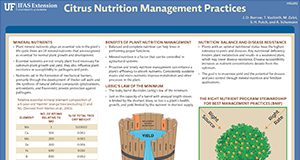
A new two-page fact sheet has been published by the Horticultural Sciences Department and the UF/IFAS Citrus Research and Education Center about citrus nutrition management practices. It was written by J.D. Burrow, T. Vashisth, M. Zekri, S.H. Futch, and A. Schumann.
http://edis.ifas.ufl.edu/hs1292
Harvesting Charges for Florida Citrus: Picking, Roadsiding, and Hauling, 2015/16
A survey of Florida citrus harvesters was conducted in July 2016 to collect data and estimate the harvesting charges to Florida citrus growers during the 2015/16 season. This 5-page fact sheet written by Ariel Singermam, Marina Burani-Arouca, and Stephen H. Futch and published by the UF Department of Food and Resource Economics presents the results of the survey, summarizing the harvesting charges for citrus during the 2015/16 season and documenting the changes in harvesting costs as the impact of HLB increases across the state. The estimates presented provide the basis for computing on-tree prices from delivered-in prices, thus allowing the computation of the change in citrus growers’ economic returns as the industry adapts to remain profitable.
http://edis.ifas.ufl.edu/fe1005
Planting and Annual Cultural Maintenance Costs for Reset-Replacement Trees in a Florida Citrus Grove in 2016
Replacement of diseased, unproductive or dead trees is an important part of the cultural program for citrus groves. This five-page fact sheet uses prices and productivity rates collected through a telephone survey in May 2016 to analyze the different preferred management and reset practices. Written by Marina Burani-Arouca, Stephen H. Futch, and Ariel Singerman and published by the Food and Resource Economics Department.
http://edis.ifas.ufl.edu/fe995
Suggested Weed Control Programs for Citrus
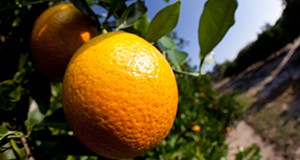
Weed management is an important component of citrus production. The selection and implementation of a weed management program can lead to both economic and environmental returns. This three-page fact sheet details how to manage weeds in both young and mature groves, the differences in weed control programs between interior areas and coastal or flatwoods areas, how to control weeds after a freeze, and common ways that herbicides are misused. Written by Stephen H. Futch and Brent Sellers, and published by the Horticultural Sciences Department.
http://edis.ifas.ufl.edu/ch084
Freeze Damage Symptoms and Recovery for Citrus
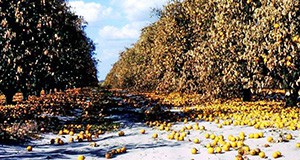
Citrus trees are evergreen, never become fully dormant, and cannot withstand temperatures as low as those tolerated by deciduous trees. But citrus trees can become preconditioned or acclimated to cool air temperatures that occur in late fall and winter. One of the best ways to lessen cold injury and to hasten recovery from cold damage is to maintain healthy trees. This five-page fact sheet discusses the symptoms of freeze damage and ways to help recover trees that have been damaged. Written by Mongi Zekri, Chris Oswalt, Steve Futch, Gary England, Camilly McAvoy, Laurie Hurner, and Parker Platts, and published by the Horticultural Sciences Department.
http://edis.ifas.ufl.edu/hs1250
Citrus Reset Management
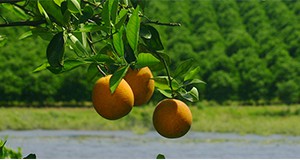
Replacement of dead and diseased trees in Florida citrus groves has always been an important part of citrus production. Today, tree replacement is more important than ever since overhead and production costs are escalating and a full stand of productive trees is essential to maximize production and profits. In more recent times, Huanglongbing (HLB), or citrus greening, has accelerated tree loss rates as well as the ability for growers to bring young citrus trees into production. This five-page fact sheet discusses a wide range of techniques for providing young tree care. Many of these should prove useful to Florida citrus growers confronted with the problem of managing resets. Written by Stephen H. Futch, and published by the Horticultural Sciences Department.
http://edis.ifas.ufl.edu/ch025
Maximizing Weed Control in Florida Citrus

With Florida citrus growers and production managers being “squeezed” between rising production prices and declining yields from citrus greening, there’s more call than ever to reduce citrus production costs. Controlling weeds is a major expense, amounting to 11% of the total $2,278 annual production cost per acre for the 2014–2015 season. This 3-page fact sheet teaches the six essential components of an effective weed-management program to help maintain the profitability of this vital Florida industry. Written by Stephen H. Futch and Brent Sellers and published by the Horticultural Sciences Department. http://edis.ifas.ufl.edu/hs237
Florida Citrus Rootstock Selection Guide, 3rd Edition
Information about citrus rootstocks has become an important part of understanding and managing citrus greening (Huanglongbing or HLB). This selection guide covers 20 characteristics of 45 citrus rootstocks and explains its methodology in detail. This 3-page fact sheet was written by William S. Castle, Kim D. Bowman, Jude W. Grosser, Stephen H. Futch, and James H. Graham and published by the UF Department of Horticultural Sciences, May 2015.
http://edis.ifas.ufl.edu/hs1260
Citrus Mechanical Harvesting Systems–Continuous Canopy Shakers
 Mechanization has been the hallmark of American agriculture. Nearly 100 percent of the agronomic crops grown in the United States are plowed, planted, and harvested with mechanical equipment. Mechanical harvesting equipment for sweet oranges has been studied extensively since the 1970s and during the 2005/06 harvest season, trunk and canopy shakers harvested more than 36,000 acres of Florida citrus. Mechanically harvested citrus acreage, however, has decreased significantly since 2005. During the 2012/13 season, less than 9,000 acres were mechanically harvested (FDOC 2013). Nevertheless, development and adoption of mechanical harvesting technology is important to the long-term economic sustainability of the Florida orange juice processing industry. This 5-page fact sheet describing canopy shakerswas written by F.M. Roka, R.J. Ehsani, S.H. Futch, and B.R. Hyman, and published by the UF Department of Food and Resource Economics, August 2014.
Mechanization has been the hallmark of American agriculture. Nearly 100 percent of the agronomic crops grown in the United States are plowed, planted, and harvested with mechanical equipment. Mechanical harvesting equipment for sweet oranges has been studied extensively since the 1970s and during the 2005/06 harvest season, trunk and canopy shakers harvested more than 36,000 acres of Florida citrus. Mechanically harvested citrus acreage, however, has decreased significantly since 2005. During the 2012/13 season, less than 9,000 acres were mechanically harvested (FDOC 2013). Nevertheless, development and adoption of mechanical harvesting technology is important to the long-term economic sustainability of the Florida orange juice processing industry. This 5-page fact sheet describing canopy shakerswas written by F.M. Roka, R.J. Ehsani, S.H. Futch, and B.R. Hyman, and published by the UF Department of Food and Resource Economics, August 2014.
http://edis.ifas.ufl.edu/fe951
Citrus Mechanical Harvesting Systems–Trunk Shakers
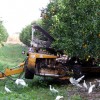 While citrus growers are rightfully concerned about restoring the health of their HLB-infected trees, more study and consideration should be given to mechanical harvesting. The costs to grow and harvest citrus have been escalating significantly since 2006, and the cost savings potential from mechanical harvesting technologies can help Florida growers remain economically viable. This 4-page fact sheet was written by F.M. Roka, R.J. Ehsani, S.H. Futch, and B.R. Hyman, and published by the UF Department of Food and Resource Economics, August 2014.
While citrus growers are rightfully concerned about restoring the health of their HLB-infected trees, more study and consideration should be given to mechanical harvesting. The costs to grow and harvest citrus have been escalating significantly since 2006, and the cost savings potential from mechanical harvesting technologies can help Florida growers remain economically viable. This 4-page fact sheet was written by F.M. Roka, R.J. Ehsani, S.H. Futch, and B.R. Hyman, and published by the UF Department of Food and Resource Economics, August 2014.
http://edis.ifas.ufl.edu/fe950
Personal Protective Equipment (PPE) Reference Guide for Low-Volume Ground Citrus Applicators (CH203)
 This 2-page fact sheet provides a table describing personal protective equipment requirements for several products used in citrus production. Written by S.H. Futch, L.L. Stelinski, M.E. Rogers, and J.D. Yates, and published by the UF Department of Horticultural Sciences, July 2011.
This 2-page fact sheet provides a table describing personal protective equipment requirements for several products used in citrus production. Written by S.H. Futch, L.L. Stelinski, M.E. Rogers, and J.D. Yates, and published by the UF Department of Horticultural Sciences, July 2011.
http://edis.ifas.ufl.edu/ch203
AE248 Fertilizer Application Best Management Practices for Citrus Grove Workers
Revised! AE248, a 12-page fact sheet by Brian Boman, Darren Cole, Steve Futch, Ward Gunter, Jack Hebb, and Chris Wilson, instructs citrus grove workers in fertilizer application best management practices. Includes references and quizzes throughout. Published by the UF Department of Agricultural and Biological Engineering, March 2009.
http://edis.ifas.ufl.edu/ae248
CH203 Personal Protective Equipment (PPE) Quick Reference Guide for Low Volume Citrus Applications
CH203, a one-page fact sheet by S.H. Futch, L.L. Stelinski, M.E. Rogers and J.D. Yates, provides a table describing personal protective equipment requirements for several products used in citrus production. Published by the UF Department of Entomology and Nematology, September 2009.
http://edis.ifas.ufl.edu/ch203
CH201 Scouting for Citrus Greening: Scouting Today to Protect Future Profits
CH201, a 2-page trifold brochure by J.D. Yates, S.H. Futch, and T.M. Spann, highlights the purpose of scouting, frequency, methods, grove conditions, tagging suspect trees, scout responsibilities, safety concerns, diagnostics, and what to scout for. Includes contact information for UF/IFAS Extension citrus experts. Published by the UF Department of Horticultural Sciences, August 2008.
http://edis.ifas.ufl.edu/CH201
AE246 Herbicide Application Best Management Practices for Citrus Grove Workers
Revised! AE246, a 13-page illustrated fact sheet by Brian Boman, Darren Cole, Steve Futch, Ward Gunter, Jack Hebb, Chris Wilson, is part of the Best Management Practices (BMPs) for Citrus Grove Workers series. It covers personal protective equipment, tractor and herbicider preventive maintenance, mixing and loading, posting, important stepts to take before application, herbicide application, equipment clean up, and spill containment. Includes three comprehension quizzes and references. Published by the UF Department of Agricultural and Biological Engineering, March 2009.
http://edis.ifas.ufl.edu/AE246
